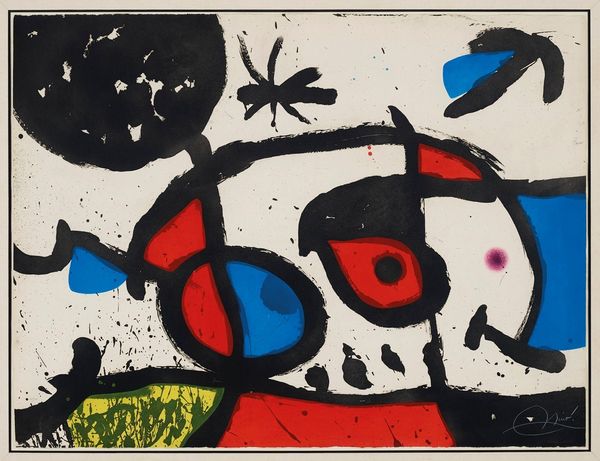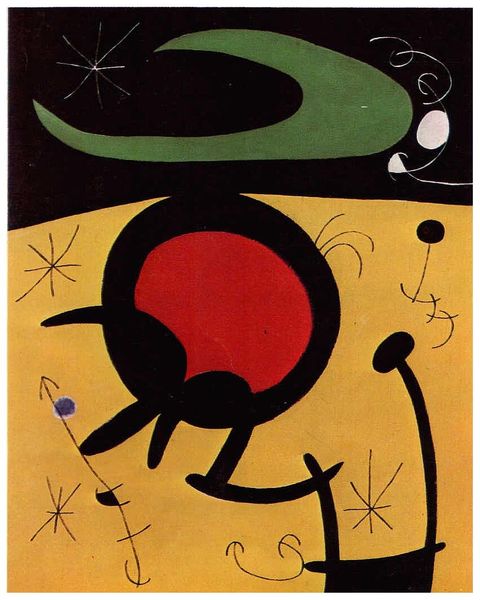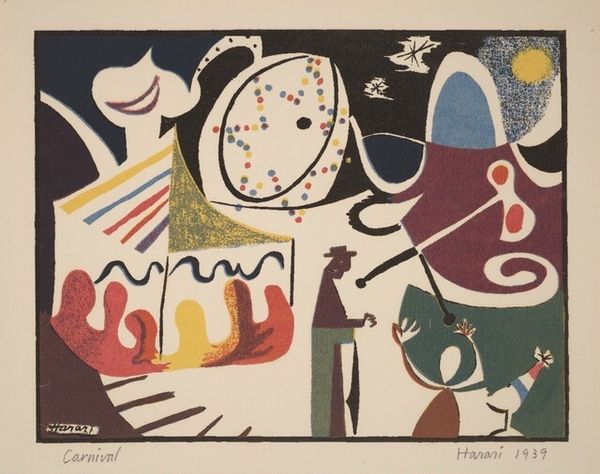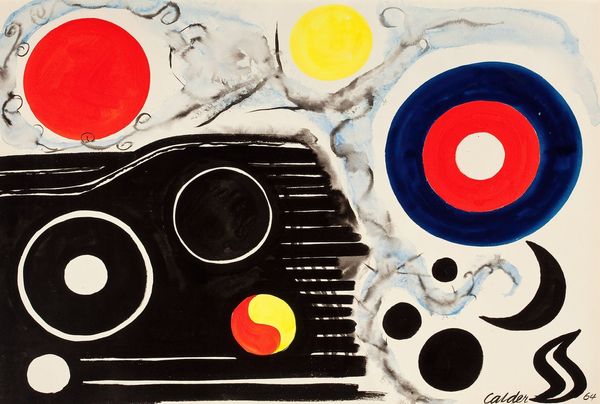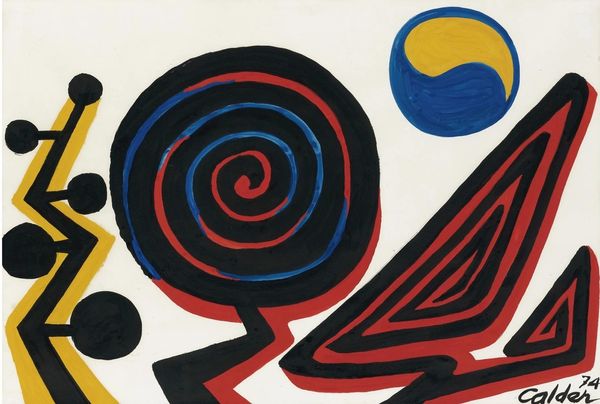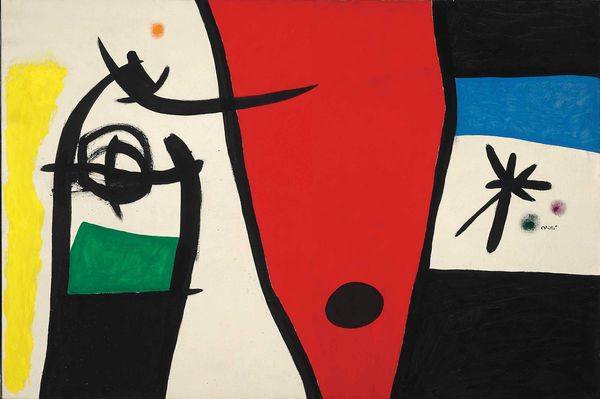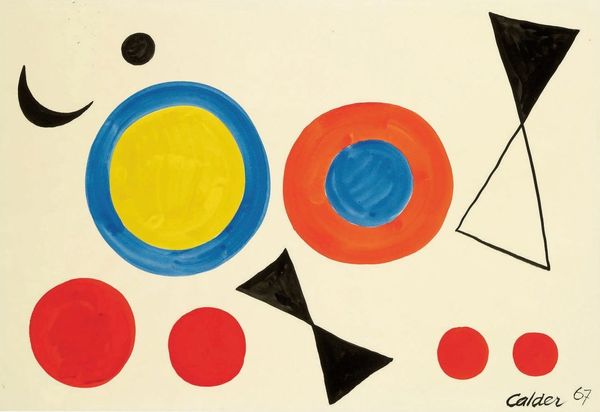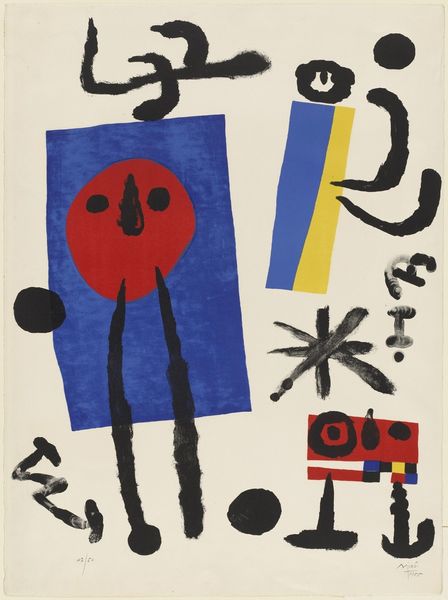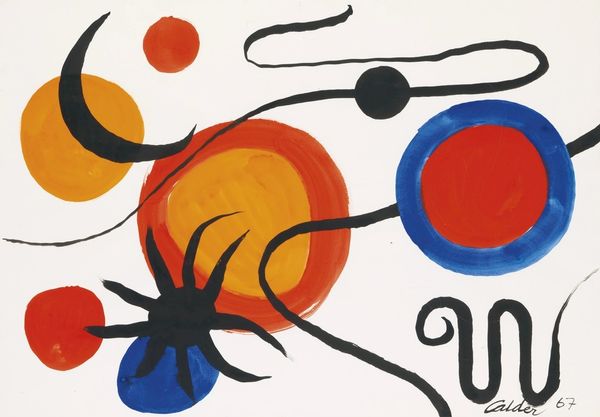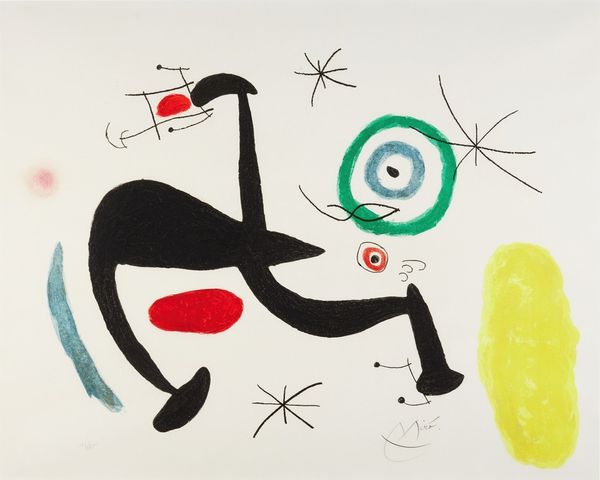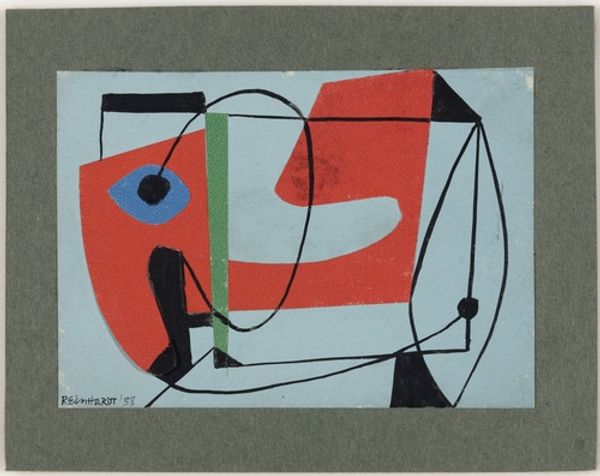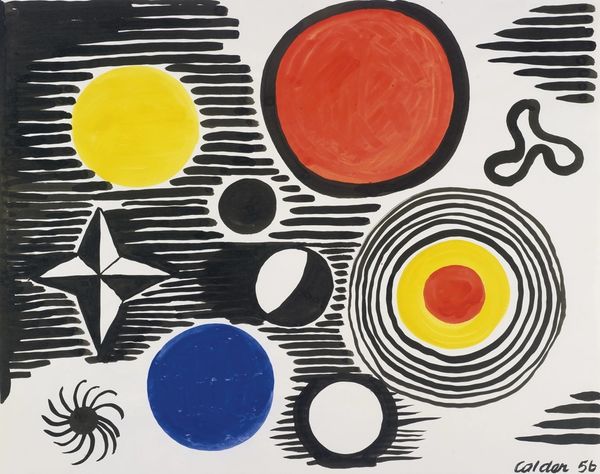
abstract-expressionism
figuration
geometric
abstraction
line
surrealism
modernism
Dimensions: overall: 37.2 x 55 cm (14 5/8 x 21 5/8 in.)
Copyright: National Gallery of Art: CC0 1.0
Joan Miró’s “Woman at the Mirror” is an image brought to life through the graphic process of lithography. It is made using limestone or metal, and oily crayons. The planographic printing technique is what gives this piece its bold, flat blocks of vibrant color. Miró was keen to explore the depths of the subconscious, and the immediacy of lithography lends itself well to the translation of spontaneous gesture and primal form. It's a printing process that favors freedom. The artist can draw directly onto the stone with a greasy crayon, capturing a quality of line close to the original movement of the hand. The result is a print that feels fresh and immediate. Miró embraced the democratic nature of printmaking, creating artworks that were accessible to a wider audience. This reflects a rejection of the traditional art world, where unique, handmade objects reigned supreme. Instead, Miró celebrates the potential of mechanical reproduction to democratize art. He elevates it to a new level of creative expression. This piece reminds us that art is not just about the final image, but the way in which it is made.
Comments
No comments
Be the first to comment and join the conversation on the ultimate creative platform.
